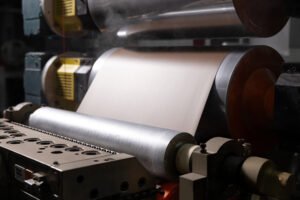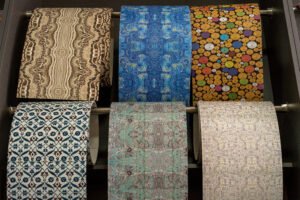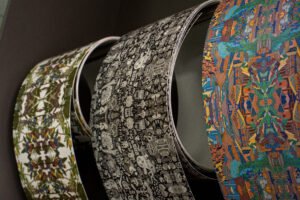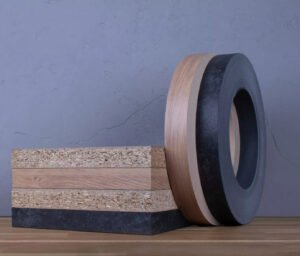I see the problem: buyers want better looks, but returns and mismatches rise. I want to help you respond fast and sell more.
South American furniture moves toward natural textures, local craft, and greener materials. Edge banding must match looks, resist humidity, and support small runs.

The market is changing. I will show five trends and what they mean for edge band suppliers. I will add clear actions you can take now.
Shifting Aesthetics: What Defines South American Furniture Design in 2025–2030?
I hear one request more than any other: make furniture feel local and real. That creates design pressure on edges.
Design is moving toward natural materials, tactile surfaces, and mixed styles. Buyers want wood grain, soft textures, and warm colors. They also like small, multiuse pieces for apartments. This changes how edges must look and perform.

Dive deeper — concrete shifts, buyer demands, and edge banding implications
I track four concrete shifts that matter to edge banding.
1. Natural and tactile finishes grow
People choose warm wood tones, matte surfaces, and textured laminates. They touch furniture more. This means edges must match wood grain and feel right under hand.
2. Mixed-material pieces rise
Designs mix wood, metal, stone look, and fabric. Edges must bridge these materials. That pushes suppliers to offer metal-look edges, thin wood veneers, and printed textures that match panels.
3. Compact and multifunctional furniture expands
Urban buyers want smaller pieces that last. Edges will face more wear from daily assembly and movement. Durable plastic edges (PP/ABS) and strong adhesives become more valuable.
4. Local craft and customization matter
Designers use local motifs and small batches. They want short runs of custom patterns. Digital-printed edges and low-MOQ offerings win these clients.
I test samples locally. I show buyers edge strips next to panel faces. I also report durability tests. When I do this, designers feel confident. They pick my edges over lower-cost alternatives.
| Shift | What buyers want | How edge suppliers respond |
|---|---|---|
| Natural finishes | wood grain, matte touch | wood-printed edges, veneer options |
| Mixed materials | metal and stone looks | metal-look PVC, printed textures |
| Compact furniture | durability, tight joins | PP/ABS, stronger adhesives |
| Customization | small-run, local motifs | digital printing, low MOQ |
These shifts are not small. They change purchasing criteria. Suppliers who match both look and durability will win more orders.
The Rise of Sustainable and Eco-Friendly Finishes
I see clients ask for green options every week now. They want proofs and labels, not just words.
Demand for low-VOC, recycled, and certified materials is rising. Export buyers push this too. Suppliers must offer eco options and documentation to keep big customers.

Dive deeper — certification, material choices, and how to show proof
Sustainability has three parts: the material, the adhesive, and the proof.
Materials
Buyers ask for recycled PVC, recycled ABS, and bio-based options. Some also want FSC-certified veneer. These options reduce environmental impact. They also help brands sell to eco-conscious consumers.
Adhesives
Low-VOC adhesives are required for many export and retail buyers. PUR adhesives often give better performance and can have acceptable VOC profiles. Some buyers still accept EVA if they see test data.
Proof and documentation
Paper claims do not sell. Buyers ask for MSDS, VOC test results, and recycling information. I keep a simple folder for each SKU with its test data. I share that folder with clients during sample requests.
Market and buyer behavior
Research shows growth in premium and eco segments. The Latin American furniture market is growing, and a slice of that growth goes to higher-value, greener products. Suppliers that add eco SKUs and quick documentation win more projects.
| Eco action | Buyer benefit | Supplier task |
|---|---|---|
| Recycled edge material | Better brand story | Source tested recycled coils |
| Low-VOC adhesive | Meets retailer rules | Test and document VOC levels |
| Certified veneer | Premium look | Keep FSC or similar proof |
I recommend starting with one eco SKU and one adhesive with test data. Offer them as a “green option” in your catalog. Track orders for three months. If demand grows, expand the range.
Popular Textures and Colors Across South America’s Key Markets
I watch small pattern shifts closely. Colors and textures differ by country and by buyer type.
Earthy tones and natural wood finishes lead in most markets. Neutral beiges, warm browns, and deep greens are common. High-gloss whites sell in urban, modern lines. Country taste varies, so offer a palette, not a single color.

Dive deeper — country nuances, texture types, and stocking advice
I split the region into quick zones and explain what sells.
Brazil and big urban centers
- What buyers favor: natural wood tones, warm oak, mid-tone walnut.
- Edge needs: good wood-print matching, matte and satin finishes. Urban designers also request metal-look accents for mixed-material pieces.
Chile and Colombia
- What buyers favor: elegant natural textures and cleaner modern lines.
- Edge needs: high-quality printed edges and thin veneer options. These markets value design detail.
Peru and smaller markets
- What buyers favor: practical, affordable finishes with warm tones.
- Edge needs: cost-effective PVC with good color match.
Argentina and boutique segments
- What buyers favor: a mix of classic and contemporary. Darker woods and unique textures appear in premium lines.
- Edge needs: premium veneer edges and custom printed options.
Texture types to offer: matte wood grain, low-gloss leather-look, stone-look patterns, and metal textures. Each type has manufacturing and adhesive implications. For example, stone-look prints may need a slightly thicker tape to mask panel edges.
| Market | Top colors | Recommended edge types |
|---|---|---|
| Brazil | warm oak, walnut | matte wood-print, veneer |
| Chile/Colombia | natural, clean | digital print, thin veneer |
| Peru | warm neutral | cost PVC with solid match |
| Argentina | dark wood, mixed | premium veneer, custom print |
I keep a regional sample kit. I send kits by country with 8–12 popular finishes. This speeds decisions and wins trust.
Matching Edge Banding with Modern Furniture Finishes
I test match samples for every project. A small mismatch kills a sale.
Edges must match panel appearance, sheen, and texture. Digital printing and improved color control make this possible. Suppliers must help clients test and approve samples fast.

Dive deeper — practical steps, tech options, and quality checks
I recommend a stepwise match and test workflow for suppliers and buyers.
1. Color and texture match workflow
- Request a panel sample from the buyer.
- Print or select edge samples that aim to match the panel.
- Send samples with a short test report (humidity, peel tests, gloss readings).
2. Technology options
- Digital printing gives precise grain and color match for small runs. It also supports custom motifs and short lead times.
- Laser / zero-gap-ready tapes help achieve near-seamless joins. They pair well with modern panels and high-end furniture.
- Veneer edges need good sealing and stable substrate to avoid swell in humid regions.
3. Quality checks to include
- ΔE color tolerance measurement for visible match. A typical spec is ΔE ≤ 2–3 for high-end projects.
- Gloss level check to ensure sheen matches (matte vs satin vs high-gloss).
- Humidity cycle test for tropical markets to check delamination risk.
| Check | Why it matters | Pass criteria |
|---|---|---|
| ΔE color match | Visual consistency | ΔE ≤ 2–3 (premium) |
| Gloss match | Sheen uniformity | Within 5 gloss units |
| Humidity test | Durability | No delam after 48h soak |
I include these checks in every sample pack. That practice reduces rework and builds buyer confidence.
How Edge Banding Suppliers Can Stay Ahead in the South American Market
I act like a local partner. I offer samples, training, and clear lead times.
Suppliers that offer regional palettes, quick samples, and proof of durability will win. Stock common finishes locally. Offer small-batch digital printing and clear technical support.

Dive deeper — tactical playbook: inventory, services, and sales tools
I follow a four-step plan when I enter a new South American market.
Step 1 — Local sample inventory
Keep a small stock of 10–20 best-selling finishes in the country. Ship samples within 24–48 hours. Fast samples win designer projects.
Step 2 — Offer tiered SKUs
Provide basic, plus, and premium edge ranges. This helps buyers choose by price and need. Make specs clear for each tier.
Step 3 — Technical support and training
Give machine settings, adhesive pairing, and short training. Show how to set glue temp, speed, and pressure for local climates.
Step 4 — Marketing and case studies
Publish one-page case studies with before/after photos and a short metric (returns down X%). Use local social proof to build trust.
| Action | Cost | Expected benefit |
|---|---|---|
| Local samples | Low | Faster sales |
| Tiered SKUs | Medium | Broader market reach |
| Training | Low | Fewer rejects |
| Case studies | Low | Higher conversion |
I run pilots before scaling. I test one city or region. I track orders, returns, and lead time. If the pilot works, I scale stock and marketing.
Conclusion
I see clear demand for natural looks, eco options, and fast custom samples. Match those needs, prove durability, and you will grow in South America through 2030.
Data sources and links
- MarkNtel Advisors — Latin America Furniture Market (market size and CAGR).
https://www.marknteladvisors.com/research-library/latin-america-furniture-market.html (MarkNtel Advisors) - IMARC Group — Edge Banding Materials Market (global market size and forecast).
https://www.imarcgroup.com/edge-banding-materials-market (IMARC Group) - Strategic Market Research — Edge Banding Materials Market Forecast to 2030.
https://www.strategicmarketresearch.com/market-report/edge-banding-materials-market (战略市场研究) - HipLatina — 2025 Interior Design Trends: Sustainable Textures (regional design signals).
https://hiplatina.com/2025-interior-design-trends-becky-g-walmart/ (HipLatina) - HDIN Research — Plastic Edge Banding Trends and ABS growth (materials trends).
https://www.hdinresearch.com/reports/157201 (hdinresearch.com)





